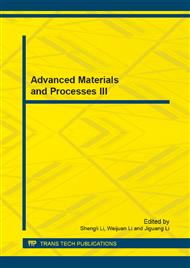p.1206
p.1212
p.1218
p.1222
p.1227
p.1233
p.1239
p.1243
p.1248
FEM Simulation of Main Deformation during Cage Roll-Forming Process
Abstract:
Cage roll-forming is an advanced roll-forming technique widely used in high frequency welding (HFW) pipes production. However, to the authors' knowledge, the real cage roll-forming production is mainly on experience rather than science. Few publications can be found on cage roll-forming for its complexity. In order to improve the understanding of the technique, a large deformation elastic-plastic finite element model for the HFW660 cage roll-forming mill was established and simulated through adopting the dynamic explicit algorithm. The distribution of effective plastic strain and the deformed geometry of the strip at the pre-forming and linear section were obtained. The simulation results were validated with the measurements. The results show that the biggest effective plastic strain (EPS) occurs at the center of strip. The distribution of EPS is far from uniform on the cross-section of the strip. This may owe to the uneven distribution of down-hill amount.
Info:
Periodical:
Pages:
1239-1242
Citation:
Online since:
September 2013
Authors:
Keywords:
Price:
Сopyright:
© 2013 Trans Tech Publications Ltd. All Rights Reserved
Share:
Citation:


